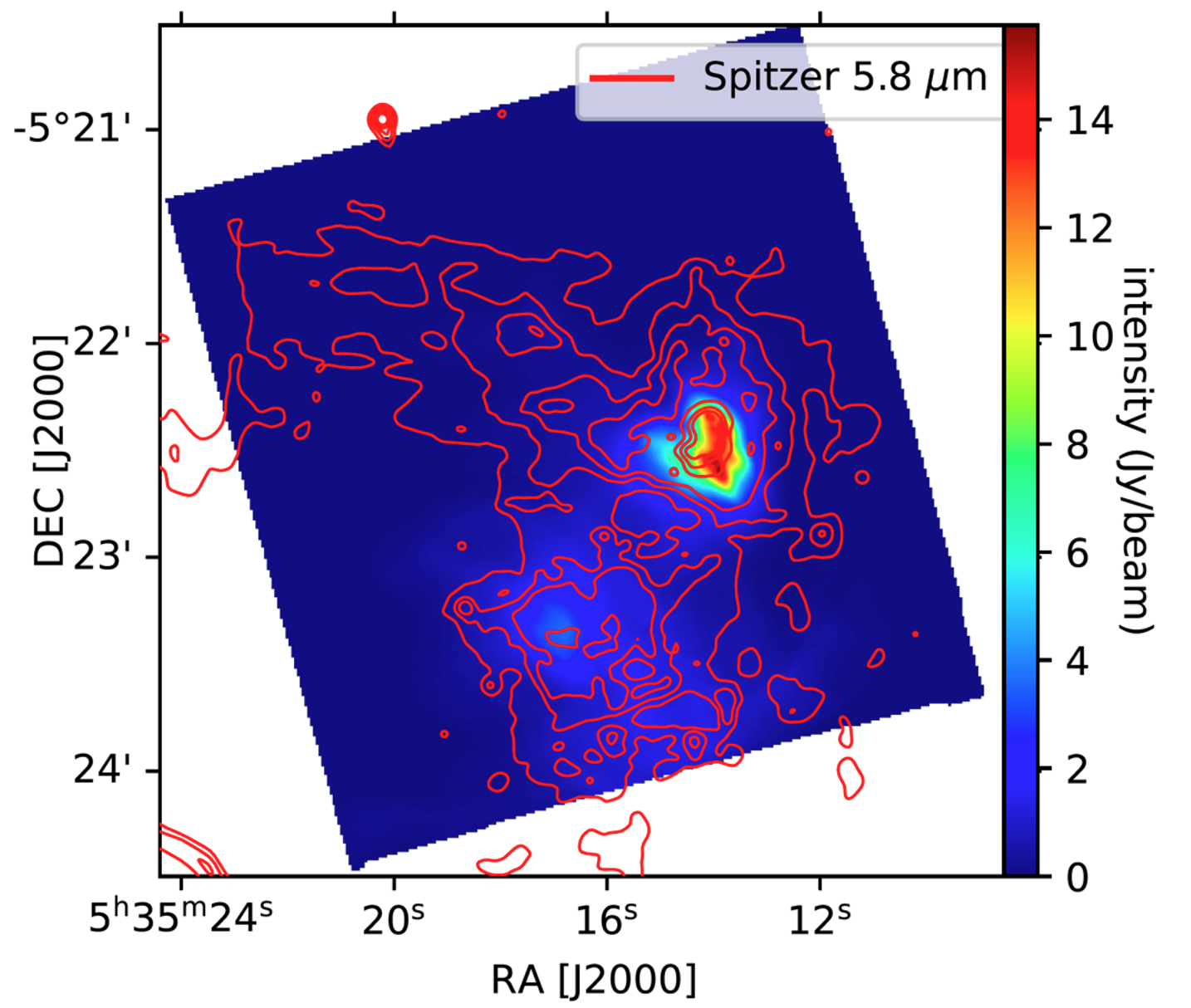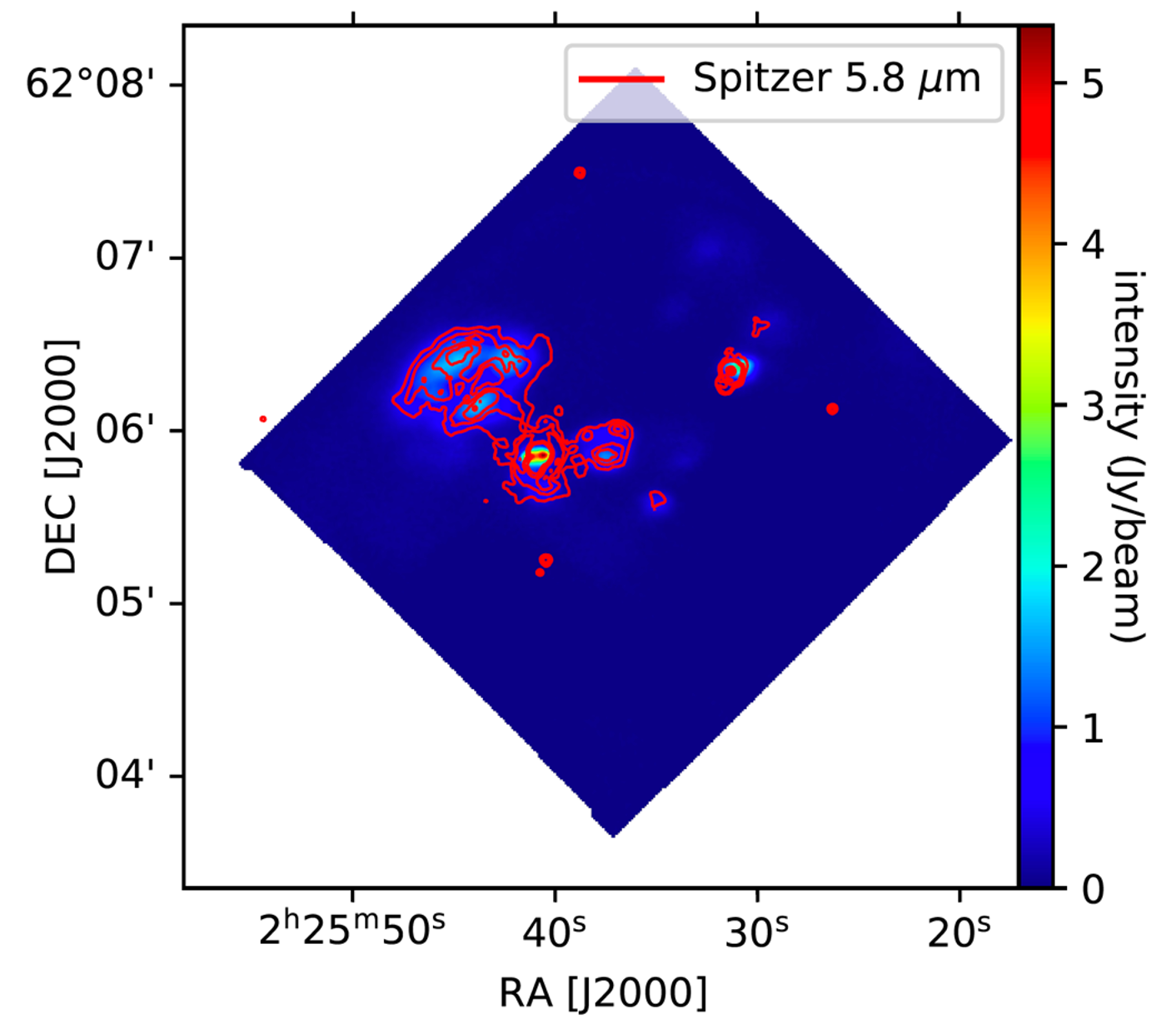When high-mass stars are formed in the densest regions of molecular clouds they start heating and dispersing the cloud. The disruption of clouds by stellar feedback plays a central role in galaxy evolution and the associated dust heating results in dust emission in the mid-infrared that affects the spectral energy distribution (SED) of observed galaxies. Directly observing and resolving this heated dust in galactic HII regions is thus important to understand the impact of stellar feedback and how it shapes galactic SEDs.
Studying the bright galactic HII regions was complicated with Spitzer or WISE because the brightest regions were heavily saturated in the mid-infrared. The FORCAST receiver on SOFIA does however allow to observe these regions. Observations at 19.7 µm were carried out for the diverse emblematic HII regions DR21, M42 and W3 (and at 37.1 µm for DR21) as part of the S-DDT program 76_0002 . Other regions (W51 & M17) in the Milky Way were also covered as part of an observing program presented in Lim et al. 2019 ; 2020 . Combined with archival dust continuum observations at longer and shorter wavelengths from space telescopes this provides a rich dataset for these regions. All the FORCAST data towards these sources can be found on the SOFIA IRSA Archive .
During the observations of the 76_0002 program there were some issues with the window lens which led to some uncertainty in the data calibration.

The 19.7 µm emission towards the M42 HII region in Orion overlaid with the slightly smoothed Spitzer IRAC 3 contours at 5.8 µm.

The 19.7 µm emission towards the W3 HII region overlaid with the Spitzer IRAC 3 contours at 5.8 µm.